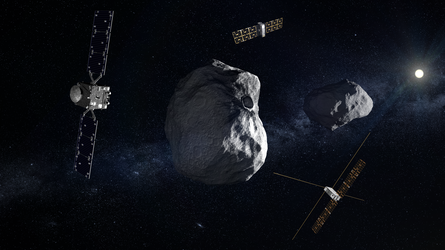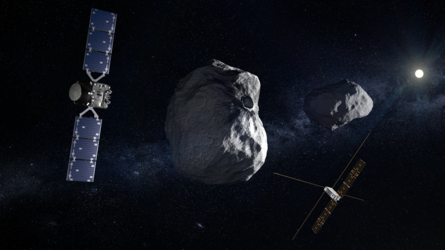Accept all cookies Accept only essential cookies See our Cookie Notice

About ESA
The European Space Agency (ESA) is Europe’s gateway to space. Its mission is to shape the development of Europe’s space capability and ensure that investment in space continues to deliver benefits to the citizens of Europe and the world.
Highlights
ESA - United space in Europe
This is ESA ESA facts Member States & Cooperating States Funding Director General Top management For Member State Delegations European vision European Space Policy ESA & EU Space Councils Responsibility & Sustainability Annual Report Calendar of meetings Corporate newsEstablishments & sites
ESA Headquarters ESA ESTEC ESA ESOC ESA ESRIN ESA EAC ESA ESAC Europe's Spaceport ESA ESEC ESA ECSAT Brussels Office Washington OfficeWorking with ESA
Business with ESA ESA Commercialisation Gateway Law at ESA Careers Cyber resilience at ESA IT at ESA Newsroom Partnerships Merchandising Licence Education Open Space Innovation Platform Integrity and Reporting Administrative Tribunal Health and SafetyMore about ESA
History ESA Historical Archives Exhibitions Publications Art & Culture ESA Merchandise Kids Diversity ESA Brand Centre ESA ChampionsLatest
Space in Member States
Find out more about space activities in our 23 Member States, and understand how ESA works together with their national agencies, institutions and organisations.
Science & Exploration
Exploring our Solar System and unlocking the secrets of the Universe
Go to topicAstronauts
Missions
Juice Euclid Webb Solar Orbiter BepiColombo Gaia ExoMars Cheops Exoplanet missions More missionsActivities
International Space Station Orion service module Gateway Concordia Caves & Pangaea BenefitsLatest
Space Safety
Protecting life and infrastructure on Earth and in orbit
Go to topicAsteroids
Asteroids and Planetary Defence Asteroid danger explained Flyeye telescope: asteroid detection Hera mission: asteroid deflection Near-Earth Object Coordination CentreSpace junk
About space debris Space debris by the numbers Space Environment Report In space refuelling, refurbishing and removingSafety from space
Clean Space ecodesign Zero Debris Technologies Space for Earth Supporting Sustainable DevelopmentLatest
Applications
Using space to benefit citizens and meet future challenges on Earth
Go to topicObserving the Earth
Observing the Earth Future EO Copernicus Meteorology Space for our climate Satellite missionsCommercialisation
ESA Commercialisation Gateway Open Space Innovation Platform Business Incubation ESA Space SolutionsLatest
Enabling & Support
Making space accessible and developing the technologies for the future
Go to topicBuilding missions
Space Engineering and Technology Test centre Laboratories Concurrent Design Facility Preparing for the future Shaping the Future Discovery and Preparation Advanced Concepts TeamSpace transportation
Space Transportation Ariane Vega Space Rider Future space transportation Boost! Europe's Spaceport Launches from Europe's Spaceport from 2012Latest

Hera approaching Didymos asteroids
Thank you for liking
You have already liked this page, you can only like it once!
One of 2022's space highlights was the NASA DART mission’s collision with Dimorphos (the smaller asteroid seen right), the moon of the binary asteroid Didymos (seen left). The impact which measurably shifted the target asteroid's orbit around its primary while casting a plume of debris thousand of kilometres out into space.
Next comes ESA’s Hera spacecraft which will return to the binary asteroid to perform a close-up survey of the crater left by DART, as well as measuring Dimorphos’ mass and make-up, along with that of its central body.
“Hera is due to be launched in October 2024,” explains Ian Carnelli, heading the mission. “In order to make that deadline our team has been working hard during the last year to finalise and test the various spacecraft subsystems – including the two CubeSats that will be deployed from Hera itself in the vicinity of Dimorphos. Meanwhile the overall mission passed its system Critical Design Review at the end of 2022, at the same time as Hera received funding for its launcher and operations.
“This coming year is when everything comes together: all elements of the Hera flight model are due to be integrated so that we can perform a full campaign of environmental testing on the spacecraft at ESA’s ESTEC Test Centre in the Netherlands. So this is going to be another extremely busy year, but at the end of it we aim to be well on track for launch.”
The ESTEC Test Centre is the largest satellite test facility in Europe, equipped with facilities to simulate every aspect of the launch and space environment. Hera’s spacecraft-level test campaign is forecast to begin in the autumn.
Hera will be equipped with automated guidance, navigation and control to allow it to safely navigate the double-asteroid system, akin in function to a self-driving car. Its desk-sized body will carry instruments including an optical Asteroid Framing Camera, supplemented by thermal and spectral imagers, as well as a laser altimeter for surface mapping. Hera is also three spacecraft in one, because it will also deliver a pair of shoebox-sized CubeSats to the vicinity of Dimorphos.
The Juventas CubeSat will perform the first ever radar probe of an asteroid interior, while also carrying a gravimeter and accelerometer to measure the body’s ultra-low gravity and surface mechanical response. The other CubeSat, Milani – named after the mission's original inventor – will perform near-infrared spectral imaging and sample asteroid dust.
The CubeSat pair will remain in contact with their Hera mothership and each other through a novel inter-satellite link system, to build up experience of overseeing multiple spacecraft in exotic near-weightlessness, before eventually touching down on Dimorphos.
NASA’s DART and ESA’s Hera missions have been supported by the same international teams of scientists and astronomers, and take place through an international collaboration called AIDA – the Asteroid Impact and Deflection Assessment. Planetary defence has no borders and is a great example of what international collaboration can achieve.
-
CREDIT
ESA-Science Office -
LICENCE
ESA Standard Licence

Hera scans Dimorphos with its laser altimeter

Hera networking with CubeSats

Hera deploying CubeSats

Hera CubeSats’ touchdown















 Germany
Germany
 Austria
Austria
 Belgium
Belgium
 Denmark
Denmark
 Spain
Spain
 Estonia
Estonia
 Finland
Finland
 France
France
 Greece
Greece
 Hungary
Hungary
 Ireland
Ireland
 Italy
Italy
 Luxembourg
Luxembourg
 Norway
Norway
 The Netherlands
The Netherlands
 Poland
Poland
 Portugal
Portugal
 Czechia
Czechia
 Romania
Romania
 United Kingdom
United Kingdom
 Slovenia
Slovenia
 Sweden
Sweden
 Switzerland
Switzerland

























